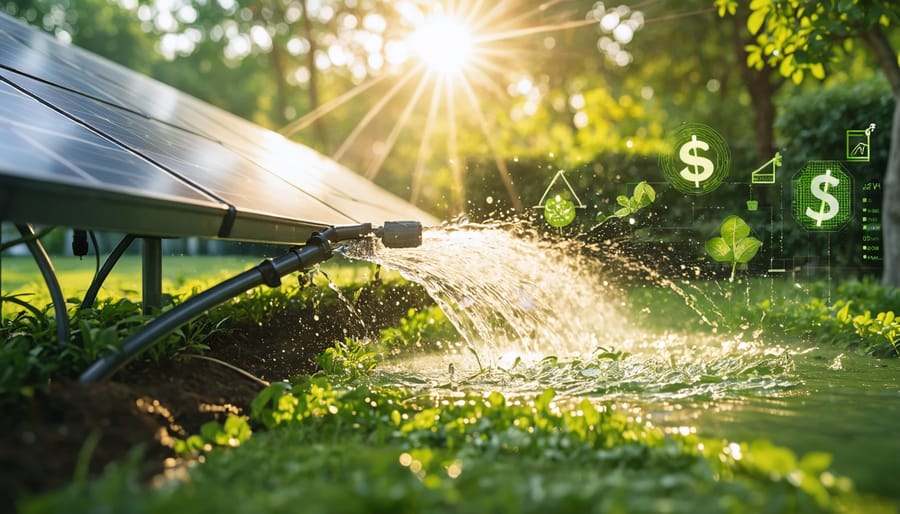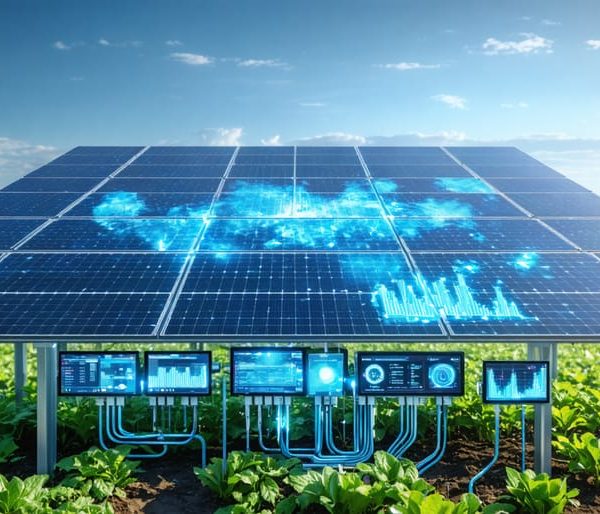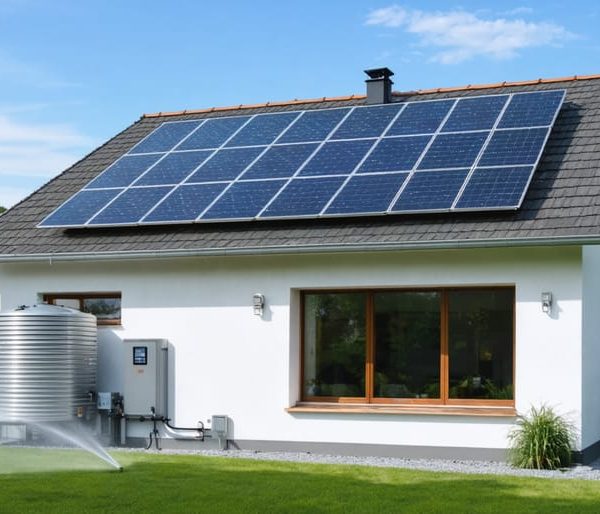Solar-Powered Irrigation Cuts Your Water Bill in Half (While Saving the Planet)
Transform your irrigation system into a sustainable powerhouse with solar-powered technology that slashes water waste and eliminates energy bills. As solar power for agriculture revolutionizes modern farming, homeowners and property managers are discovering how simple photovoltaic panels can power efficient water distribution systems year-round.
Today’s solar irrigation solutions combine advanced moisture sensors, automated controls, and clean energy to deliver precisely timed watering cycles that nurture healthier plants while conserving precious resources. By harnessing the sun’s abundant energy, these systems operate independently from the grid, providing reliable irrigation even in remote locations while reducing carbon emissions and operating costs by up to 70%.
Whether you’re maintaining a small garden or managing extensive grounds, solar-powered irrigation offers a practical path to sustainable water management that pays for itself through reduced utility bills and increased property value. The latest systems are surprisingly affordable to install, simple to maintain, and built to withstand decades of continuous operation in all weather conditions.
How Solar-Powered Irrigation Actually Works
Core Components You’ll Need
A successful solar-powered irrigation system relies on several essential off-grid solar system components working together seamlessly. At the heart of the system are solar panels, which should be sized according to your water needs and available sunlight. For most home gardens, 200-400 watt panels provide sufficient power, while larger agricultural applications may require multiple high-capacity panels.
The solar pump is your system’s workhorse. Choose between submersible pumps for wells and surface pumps for ponds or tanks. Look for models specifically designed for solar applications, as they’re optimized to work with variable power input throughout the day.
A charge controller protects your system by regulating voltage and current from the panels to the pump. Consider a MPPT (Maximum Power Point Tracking) controller for optimal efficiency. For consistent operation, include a battery bank to store excess energy for cloudy days or nighttime use.
Don’t forget essential accessories like moisture sensors, timers, and automatic shut-off valves. These smart components help conserve water and ensure your plants receive exactly what they need, when they need it.
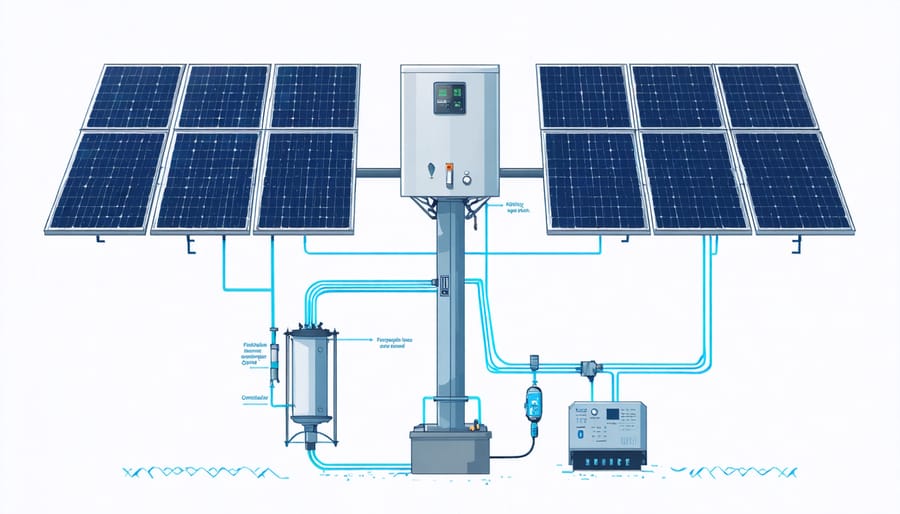
The Energy Flow: From Sun to Sprinkler
The journey from sunlight to sprinkler is a fascinating process that showcases the brilliance of renewable energy. It starts when solar panels capture sunlight and convert it into electrical energy through photovoltaic cells. This DC (direct current) electricity flows to a solar charge controller, which regulates the voltage and prevents battery overcharging.
The generated power is either used immediately or stored in deep-cycle batteries for cloudy days or nighttime irrigation. When it’s time to water your garden, the stored energy powers a pump controller, which activates the water pump. The pump draws water from your source – whether it’s a well, tank, or municipal supply – and pushes it through your irrigation system.
As water flows through the pipes, pressure builds up until it reaches your sprinklers or drip irrigation lines. The entire system works in harmony, using the sun’s free energy to deliver precise amounts of water to your plants. Smart controllers can even adjust watering schedules based on weather conditions, ensuring optimal water usage while maintaining your garden’s health.
This sustainable cycle continues day after day, powered entirely by clean, renewable solar energy.
Smart Features That Save Water and Money
Moisture Sensors and Weather Integration
Modern moisture sensors act as the brains of your solar-powered irrigation system, taking the guesswork out of when to water your plants. These smart devices monitor soil moisture levels in real-time, ensuring your garden receives exactly the right amount of water – no more, no less.
By connecting these sensors to your irrigation controller, you create a responsive system that automatically adjusts watering schedules based on actual soil conditions. When moisture levels drop below a preset threshold, the system activates. When sufficient moisture is detected, it stays off, preventing overwatering and waste.
Weather integration takes this intelligence a step further. Many modern systems now incorporate local weather data through WiFi connections, considering factors like rainfall forecasts, temperature, and humidity. For example, if rain is predicted, your system will automatically skip the next scheduled watering cycle.
The real magic happens when moisture sensors and weather integration work together. Imagine your garden just received an unexpected shower – the moisture sensors will detect the increased soil moisture and prevent unnecessary watering, while the weather integration ensures the system stays dormant until the soil needs more water.
This smart combination can reduce water consumption by up to 50% compared to traditional irrigation systems, while maintaining optimal growing conditions for your plants. It’s a perfect example of how technology can make sustainable gardening both easier and more effective.
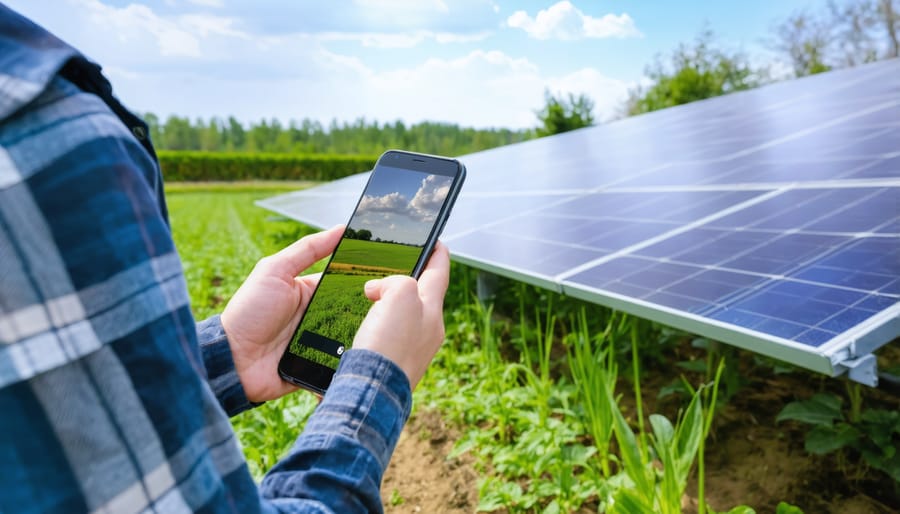
Mobile Control and Monitoring
Modern solar-powered irrigation systems now come with smart control features that put management right at your fingertips. Using dedicated mobile apps, you can monitor and adjust your irrigation system from anywhere with an internet connection. These apps typically display real-time data about water usage, soil moisture levels, and system performance.
Setting up mobile control is straightforward: simply download your system’s companion app, connect it to your irrigation controller via Wi-Fi, and you’re ready to go. Most apps offer user-friendly interfaces with intuitive controls for scheduling watering times, adjusting flow rates, and setting up different zones in your garden or property.
One of the biggest advantages of mobile control is the ability to respond quickly to changing weather conditions. If rain is forecast, you can pause your irrigation schedule with just a tap. Many apps also integrate with weather services to automatically adjust watering patterns, helping you save water and protect your plants from overwatering.
Advanced features often include push notifications for system alerts, detailed analytics of water consumption, and customizable irrigation programs for different plant types. Some systems even use AI to learn from your adjustments and optimize watering schedules automatically.
“Since installing the mobile control system, I’ve reduced my water usage by 30% while maintaining healthier plants,” says Sarah Chen, a California homeowner who switched to smart solar irrigation last year.
Installation Made Simple
DIY Installation Steps
Before starting your DIY solar irrigation installation, gather all necessary materials: solar panels, a solar pump, controller, water storage tank, PVC pipes, connectors, and basic tools. Always check local regulations regarding water usage and solar installations.
Start by selecting an ideal location for your solar panels. Choose a spot that receives maximum sunlight throughout the day, typically facing south in the Northern Hemisphere. Mount the panels on sturdy poles or brackets at a 30-45 degree angle for optimal sun exposure.
Next, install your water storage tank on elevated ground or a stable platform. This helps create natural water pressure for your irrigation system. Connect the solar pump to your water source – whether it’s a well, pond, or rainwater collection system.
Install the controller in a weather-protected area near your solar panels. This device manages the pump’s operation and monitors system performance. Run appropriate gauge wiring from the solar panels to the controller, then from the controller to the pump. Ensure all electrical connections are properly sealed against moisture.
Layout your irrigation zones using PVC pipes. Dig trenches 12-18 inches deep for the main lines, sloping slightly to prevent water pooling. Install valves at strategic points to control water flow to different areas. Connect smaller distribution pipes or drip lines to deliver water directly to your plants.
Test the system by running it during peak sunlight hours. Check for leaks and adjust sprinkler heads or drip emitters as needed. Monitor water pressure and flow rates to ensure even distribution throughout your irrigation zones.
For optimal performance, clean your solar panels monthly and inspect the system regularly for any damage or blockages. Consider installing a backup battery system for cloudy days or evening watering needs.
Remember, while this is a DIY project, don’t hesitate to consult professionals for complex electrical work or if you encounter challenging installation issues. Start with a small zone to gain experience before expanding your system.
When to Call a Professional
While solar-powered irrigation systems can be a DIY project for some, there are specific situations when calling a professional is the smartest choice. If your property requires a system that pumps more than 2,000 gallons per day or covers multiple acres, professional expertise becomes essential for proper system sizing and implementation.
You should also consult a professional if your property has significant elevation changes or requires complex zoning configurations. These scenarios demand precise calculations to ensure adequate water pressure and distribution throughout your irrigation system.
Consider professional installation if you’re not comfortable working with electrical systems or lack experience with solar panel mounting. Incorrect wiring can damage expensive components and create safety hazards, while improper panel installation might reduce system efficiency or cause structural issues.
Professional help is crucial when your system requires integration with existing irrigation infrastructure or smart home systems. Experts can ensure seamless compatibility and optimal performance across all components.
Additionally, local building codes and permits often require professional certification for solar installations. A qualified contractor will understand these requirements and ensure your system meets all legal standards.
Remember that while professional installation may seem costly upfront, it can prevent expensive mistakes and ensure your system operates efficiently for years to come. Most reputable installers offer warranties and maintenance services, providing long-term peace of mind for your investment.
Real Cost Savings and Environmental Impact
Calculate Your Savings
Ready to discover how much you can save with solar-powered irrigation? Our easy-to-use calculation method will help you understand your potential savings. Start by gathering your current monthly water and electricity bills, as these will serve as your baseline.
To calculate your savings, follow these simple steps:
1. Add up your monthly irrigation-related electricity costs
2. Calculate your water usage for irrigation
3. Estimate sunlight hours in your area using local weather data
4. Factor in the initial system cost and installation
Using these figures, you can reduce your utility costs significantly. Most homeowners see a return on investment within 3-5 years, with savings continuing to grow thereafter.
For example, a typical residential system costing $3,000 can save:
– $30-50 monthly on electricity
– 20-30% on water consumption through smart scheduling
– $400-600 annually in total savings
To make calculations easier, we’ve created a downloadable calculator tool that factors in your specific location, system size, and current utility rates. Remember that available tax incentives and rebates can further reduce your initial investment, making the switch to solar irrigation even more attractive.
Consider tracking your savings monthly to optimize your system’s performance and maximize your return on investment.
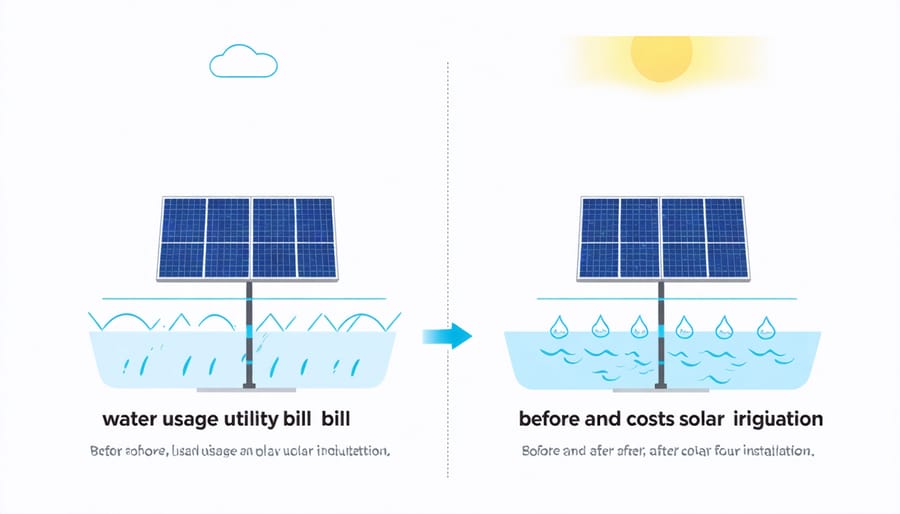
Environmental Benefits
Solar-powered irrigation systems offer remarkable environmental benefits that extend far beyond your garden or farm. By harnessing the sun’s energy instead of relying on grid electricity or fossil fuels, these systems significantly reduce carbon emissions. A typical solar irrigation setup can prevent up to 2.5 tons of CO2 emissions annually – equivalent to taking a car off the road for six months.
Water conservation is another major environmental advantage. Smart solar irrigation systems use moisture sensors and automated controls to deliver precisely the right amount of water when plants need it most. This precision can reduce water consumption by up to 30% compared to traditional irrigation methods, helping preserve our precious water resources.
These systems also eliminate the need for noisy, polluting gas-powered pumps, creating a more peaceful environment and protecting local air quality. Since solar panels have a lifespan of 25-30 years, choosing solar irrigation represents a long-term commitment to environmental stewardship.
The environmental impact extends to soil health too. By preventing over-watering, solar irrigation systems help maintain optimal soil conditions and reduce runoff that can carry fertilizers into local waterways. This promotes healthier plant growth while protecting nearby ecosystems.
For those concerned about their environmental footprint, solar-powered irrigation offers a practical way to combine sustainable water management with clean energy use, making it a win-win solution for both your property and the planet.
Solar-powered irrigation represents a powerful solution for sustainable water management that benefits both the environment and your bottom line. By harnessing the sun’s energy to power your irrigation system, you’re not just reducing electricity costs – you’re contributing to a greener future while ensuring your plants receive the consistent care they need.
The benefits we’ve explored throughout this article are clear: significant cost savings on energy bills, reduced carbon footprint, reliable water delivery even during power outages, and minimal maintenance requirements. Solar irrigation systems have proven themselves as dependable, eco-friendly alternatives to traditional electric pumps, with many users reporting payback periods of just 3-5 years.
Now is the perfect time to make the switch to solar irrigation. Start by assessing your property’s sunlight exposure and water needs, then consult with local solar installers who specialize in irrigation systems. Many regions offer tax incentives and rebates for solar installations, making the initial investment more affordable than ever.
Remember, every solar-powered irrigation system installed is a step toward sustainable water management and energy independence. Whether you’re a homeowner looking to maintain a beautiful garden or a property manager seeking to reduce operational costs, solar irrigation offers a practical, environmentally responsible solution that pays for itself over time.
Take action today – your garden, your wallet, and our planet will thank you.

